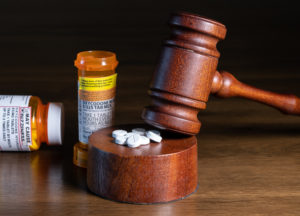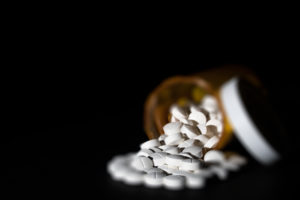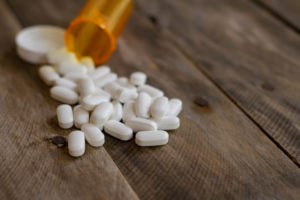Yesterday, I wrote about the National Pediatric Acquired Brain Injury Plan which was brilliantly devised and developed by Mr. Patrick Donohue. [Click here if you missed that article.] I promised to begin laying out, in greater detail, the structure of the plan and how it would help families whose children have sustained a recent injury to the brain. This might take a few posts as the scope and breadth of the plan itself is substantial.
Yesterday I ended by explaining the following:
The mission or goal of the National PABI Plan is to disseminate via each state a master plan. There will be collaboration within each state and with other states to teach, train and track public awareness, citizen involvement and the long term needs of the victims and survivors of pediatric acquired brain injury. Each state will staff a center representative, an individual in charge of basic science, a staff person in charge of education, one in charge of training, one in charge of prevention, one in charge of case management, and the last to be in charge of registry. Within each regional center, there will be a national center with each state having a representative to the national center. That regional center will be charged with staffing the following areas: prevention, acute injury, reintegration, adult transition, mild TBI, rural needs and family registry. The concept will be that families, through the internet, can reach out and find the Sarah Jane Brain Project via the internet and then be assigned to their lead center within their respective state. The lead center will then be able to direct the family immediately to the assistance they need as it relates to education, training, case management, etc.
The first category of care charged to the regional center under the National Plan, is that if prevention. Prevention is the best possible treatment for any brain injury. In recognizing that head injury is the leading cause of death and disability in children (the CDC estimates that 475,000 traumatic brain injuries occur in an among children below 14 years of age with 2% of Americans having long terms symptoms after pediatric traumatic brain injury), it is of paramount importance that head injury prevention be at the forefront of each regional center’s activities.
Current PABI prevention efforts include:
1. Primary prevention entailing preventing new injuries through education and encouragement to reduce high risk behaviors, engineering safer technologies, enforcement of safe practices and evaluation of the impact of these measures.
2. Secondary prevention involves reducing the severity of injuries through improved medical practices.
3. Tertiary prevention involves decreasing the frequency and severity of disability after an injury via improved support structures in the post acute setting.
Unfortunately, at this time injury prevention is undervalued in society. The importance of preventing a brain injury is not well appreciated by families and their communities until an injury actually occurs. Many simple, but effective preventative measures (helmets, seatbelts, car seats) are still under-utilized or improperly utilized. It is difficult to measure the effectiveness of injury prevention intervention and therefore, hard to establish its true value.
The question for you, the reader, would be this: "how does the PABI plan address injury prevention?". Well, it provides support for research to identify the most significant modifiable risk factors, it investigates effective prevention strategies for each main mechanism of injury, it uses a model of education and works with the current effective injury prevention program such as Think First and Safe Kids to develop and refine programs for all ages and ethnicities.
The second category of care charged to each regional center will be that of "Acute Care". The concept of acute care is also referred to as "The Golden Hour". During this early period when minutes really count in terms of assessing injury severity, instituting effective neurosurgical and neuro-critical care interventions and protecting the brain against any secondary injuries is the most critical hour for any family following a pediatric brain injury. What happens here affects everything that follows.
Current problems with acute care include the fact that advanced neuro monitoring is not accessible in many areas of your state and the country. To ensure the best long term outcome, it has to begin in the intensive care unit (ICU). A system must be put in place to assist in the transition of the child and their family through the system to achieve the best long term outcomes following the medical management. This would include early rehabilitation intervention, case management and most importantly, family education.
Because it truly takes a "village" to manage a child with a brain injury, an experienced multi-disciplinary team of professionals are required to manage these injured children. Physicians, nurses, occupational, physical, speech and recreational therapists as well as neuropsychologists, nutritionists, social workers, case managers and teachers are all required to work as a team with the family to allow for the best possible outcome.
If we look at recent achievements in the area of acute research and neuroscience, particularly regarding the developing brain, it is easy to see that we, as a society, are on the threshold of medical and technological discoveries that will reduce the impact of brain injury in children. In recognizing this, and through the efforts of the Sarah Jane Brain Foundation and the PABI Plan, we hope to implement a national system for ensuring the greatest number of children with traumatic brain injury or closed head injury will benefit from breakthroughs in:
1. Clinical Management and Assessment
2. Biomedical Engineering
3. Neuropharmacology
4. Genetic and Stem Cell Based Therapies
5. Advances in Rehabilitation Therapy
Survivors of traumatic brain injury have already begun to weigh in on what they think of this plan.
http://www.youtube.com/watch?v=B0Glf0ljJII
Craig Sears is no stranger to the issues facing families with children who have sustained a traumatic brian injury. He is no stranger to the diagnostic and treatment hurdles that these families will face.
If you wonder why Craig was so adamant in the above clip in his support of this National Plan, take the time to watch Craig’s story here:
http://www.youtube.com/watch?v=HdKkYIL1Wl0&feature=related
Tomorrow, our InjuryBoard segment will discuss why "mild" brain injuries aren’t mild and we will flesh out the next few stages of the National Pediatric Acquired Brain Injury Plan.
Thanks for reading.

Mr. Smith has practiced as a trial attorney since graduating Notre Dame Law School in 1992. He has litigated cases across the country including cases from Ventura County, California to Middlesex County, New Jersey. He practices in both State and Federal courts.









Comments for this article are closed.